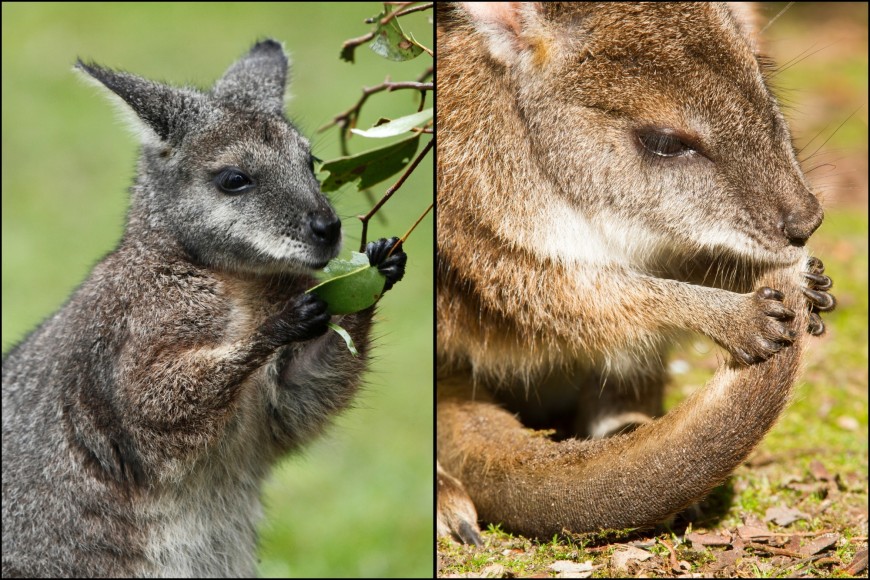They have been present in AoNZ since around 1870, when the then-Governor Sir George Grey introduced at least four species to his menagerie on Kawau Island in the Hauraki Gulf. The two smallest species, the dama wallaby (Notamacropus eugenii) and the parma wallaby (N. parma), are very difficult to tell apart. Parma wallabies have a broader diet than dama, and therefore may be more of a threat to native biodiversity.

Spot the difference: dama (left) and parma wallabies.
Dama wallabies established themselves in the North Island around the Bay of Plenty after being additionally released there in 1912, while the parma wallabies were thought to have stayed put on the island.
Funded by the Tipu Matoro National Wallaby Eradication Programme, research was carried out to look at the extent of wallaby populations across the Bay of Plenty. Scientists at Manaaki Whenua, led by Dr Andrew Veale, undertook a landscape genomics study of dama wallabies.
How was the work done? Ears of wallabies were collected from dead animals culled in control operations, roadkill, and found bodies in the Bay of Plenty – 173 samples altogether, plus two further samples from Taranaki and four from Wellington. DNA was extracted using standard methods, sequenced, and mapped to the recently completed dama wallaby genome that Andrew contributed towards assembling. This genomic sequencing and analyses were in collaboration with researchers at AgResearch.
Surprisingly, the work confirmed that parma wallabies have been living essentially undetected. This is likely due to their solitary behaviour, preference for dense scrub and forested areas, and visual similarity to the dama species.
Misidentifications of species are most common in groups such as plants and invertebrates, where identification can be a challenge even for experts. It is very rare to misidentify something as large as a wallaby – especially in a country well-attuned to the problems caused by invasive plant and animal species.
Nonetheless, the fact that a population of large animals has gone undetected for at least 30 years (and potentially for over a century), hidden amongst a morphologically similar species, highlights the continued need for monitoring of invasive species including genomic species identification. As the researchers comment, “if wallabies can go unnoticed, how many invasive insects are being missed?”

